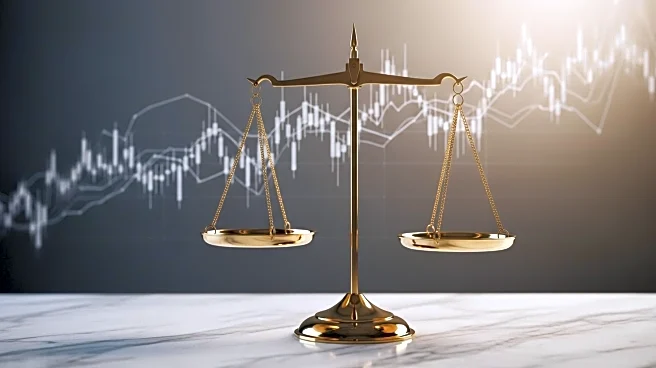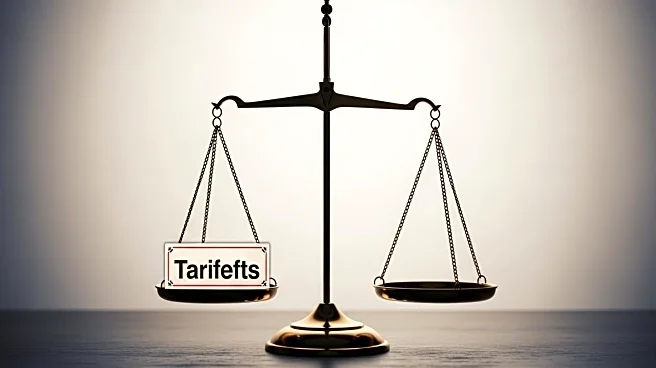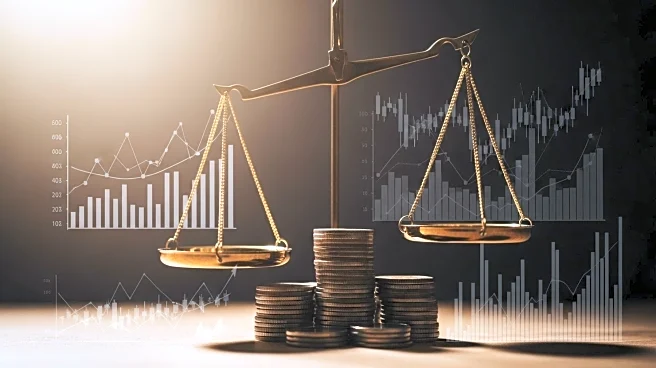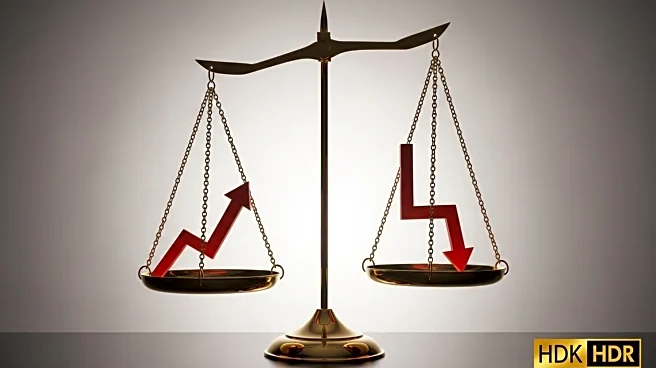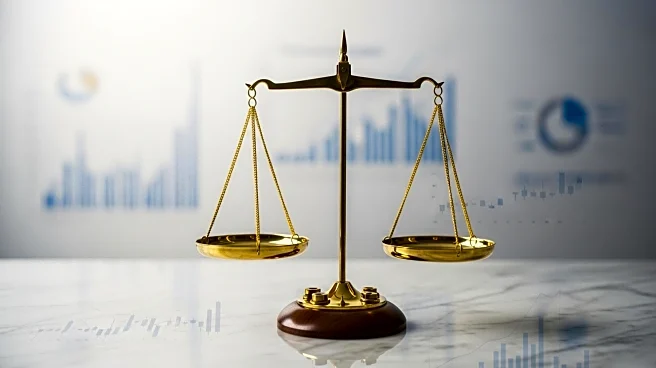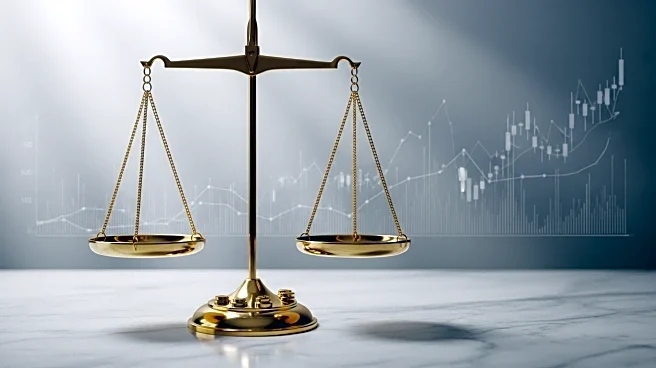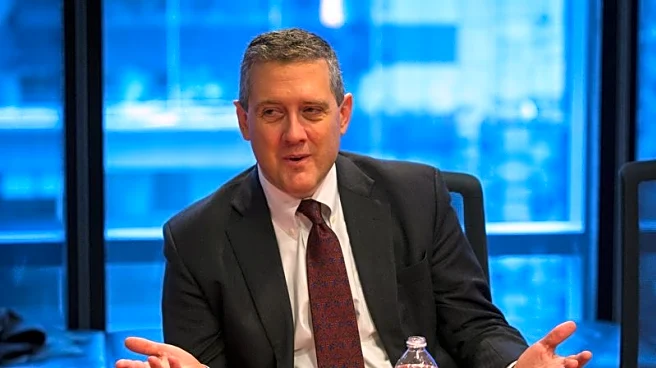What's Happening?
The Federal Reserve has reduced the benchmark interest rate by a quarter point, setting it between 4% and 4.25%. This decision comes in response to a weakening job market and rising inflation. Fed officials project further rate cuts, estimating the federal funds rate will decrease to 3.6% by the end of 2025. Despite these adjustments, the Fed's forecasts for unemployment and inflation remain unchanged. The unemployment rate has increased to 4.3%, and inflation has accelerated, with the Consumer Price Index rising by 0.4% in August. Fed Chair Jerome Powell highlighted the challenge of managing both a cooling job market and rising price pressures, noting the unusual situation of simultaneous risks to employment and inflation.
Why It's Important?
The Federal Reserve's decision to lower interest rates reflects significant concerns about the U.S. economy's trajectory. The move aims to stimulate economic activity by making borrowing cheaper, potentially offsetting the slowdown in job growth. However, rising inflation poses a challenge, as it can erode purchasing power and complicate monetary policy. The Fed's actions are crucial for businesses and consumers, influencing loan rates, investment decisions, and overall economic confidence. The balance between supporting employment and controlling inflation is delicate, and the Fed's approach will impact various economic stakeholders, including businesses, investors, and households.
What's Next?
The Federal Reserve plans to implement two more quarter-point rate cuts by the end of the year, aiming to further support the economy. Policymakers will continue to monitor economic indicators, adjusting their strategies as needed to address the dual challenges of employment and inflation. Political pressures, including those from President Trump, may influence the Fed's decisions, although Powell has emphasized the importance of data-driven policy. The ongoing debate over tariffs and their impact on inflation will also be a key consideration in future policy discussions.
Beyond the Headlines
The Federal Reserve's actions highlight broader economic uncertainties, including the impact of political dynamics on monetary policy. President Trump's criticism of Fed Chair Powell and the appointment of Stephen Miran as a Fed governor underscore the intersection of politics and economics. The Fed's independence in decision-making is crucial for maintaining market stability and confidence. Additionally, the effects of tariffs on inflation and economic activity remain a contentious issue, with potential long-term implications for trade and domestic production.

